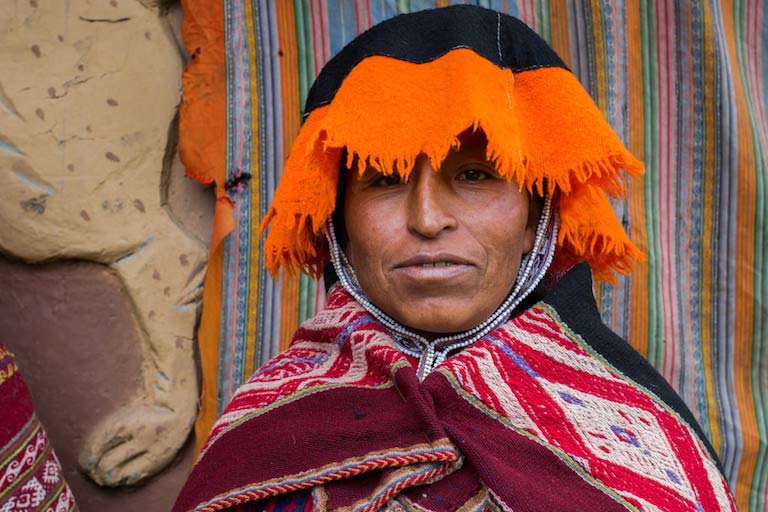Ingolfur on assignment in Peru
As the winner of our 2014 Travel Photography Scholarship, Ingo traveled to Peru to capture its ancient cultures and incredible wildlife.
Winner Photography Scholarship 2014
Ingolfur's assignment was to photograph the traditional cultures and verdant rainforests of Peru.
Visiting the Amaru Community
I woke up feeling a little better from the altitude sickness, I did not have much appetite at breakfast, so I tried the famous coca tea as it helps overcome altitude sickness, and I think it may have helped in diminishing the symptoms. Our stop was the Amaru community but on the way over there we drove through the Sacred valley that was formed by the Urubama River. It contains many Inca antiquities connected with ancient paths of the Inca trail. The Amaru community consists of about 200 families and their income is mostly based on agriculture. To help their income, the communities have organized activities to educate people about their ancient heritage and culture. The Amaru people are very friendly and proud of their origins and we had the opportunity to see the processes of creating textile, from dying the wool with herbs, weaving, to the final product. We participated when they made sacrifices to the Pachamama god and saw how they plow the fields with ancient tools and utilities. The culture of the Amaru is maybe not that different from how Iceland was back in the 18th century before we got modernized and electricity or other comforts came in to the homes.

Venturing into the Peruvian Amazon
We went by boat on the river Rio Tambopata to Posada Amazonas which is a rainforest lodge where we stayed the first night. It is located in the rainforest where you have a unique opportunity to experience the Amazonian wildlife. It was raining in the afternoon when we arrived at the lodge. When I first stepped into the jungle the experience was amazing. You could feel that the rainforest was full of life and everywhere I looked there was something new to see. At each step I took I heard a new sound that came from insects, birds and other animals. There is competition for every square meter and the phrase "it’s a jungle out there" pops up in my mind. I went macro shooting for the first time in dark and saw insects that I did not know existed. Jason helped me out with setting up my camera and I managed to take some shots.

Capturing the Moment
While I'm waiting for my flight to New York I think about what it takes to be a National Geographic photographer. As it turns out it takes a lot, but not necessarily in the areas I expected. After watching Jason work I see that he has a knack for reading people and a very good eye for “capturing the moment”. This is something I feel I need to work on. There is a great deal of work to be done before and after each shoot when you’re out in the field which is made even more complicated when you have little or no communication or electricity. All the challenges I met on this trip have been demanding but very awarding and have made me want to be a better photographer and explore other sites of the world in the future.
